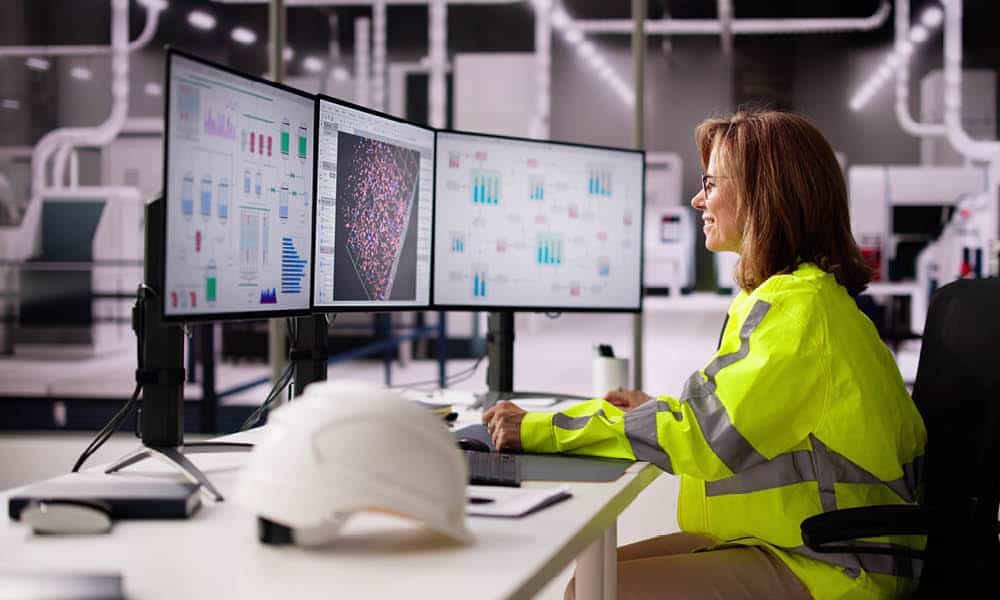Seeing the Unseen: Observability in Manufacturing

Apply software observability to manufacturing to bridge the gap

TAKEAWAYS:
● Leverage observability principles to gain real-time insights into your operations, empowering your team to make faster, data-driven decisions that enhance efficiency.
● Adopt digital technologies to break free from geographical constraints, enabling remote monitoring and control that optimize your production processes globally.
● Implement computer vision and AI to revolutionize your manufacturing, improving efficiency, safety, and overall operational excellence by capturing and analyzing real-world data.
The software industry has experienced a seismic shift with the introduction of observability. Gone are the days of guesswork and reactive problem-solving. Today, software systems boast unprecedented transparency, empowering engineers to comprehend system behavior, swiftly identify anomalies, and fine-tune performance. As the manufacturing sector embraces digital transformation, the principles of software observability offer a powerful framework for achieving operational excellence.
Central to software observability is the ability to collect, process, and analyze real-time operational data. Metrics, logs, and traces provide granular insights into system health, performance, and user experience. In manufacturing, this translates to machine sensor data, quality control reports, production line performance metrics, and more. By correlating this data, manufacturers can gain unparalleled visibility into their operations, paving the way for data-driven decision-making and continuous improvement.
Imagine a manufacturing landscape where processes are as meticulously version-controlled as software code. Every assembly line configuration, machine parameter, and quality control check is systematically recorded and traceable. This level of control, once a distant aspiration, is now within reach as manufacturing and the digital realm converge.
Software observability principles relevant to manufacturing extend beyond data. A fundamental shift has occurred in the relationship between humans and computers. In the past, software engineers were tethered to physical machines, often working in close proximity to the hardware. Today, the majority of software development is cloud-based, with engineers accessing and managing systems remotely. This decoupling of geography from computation has opened up new possibilities for collaboration and innovation.
Leveraging remote monitoring and control allows manufacturers to oversee operations from anywhere, detect issues early on, and respond swiftly to minimize downtime.
Similarly, manufacturing can benefit from breaking free from geographical constraints. Traditional manufacturing models often necessitate proximity to suppliers and labor pools. While these factors remain important, observability and digital technologies introduce a new level of flexibility. By leveraging remote monitoring and control, manufacturers can oversee operations from anywhere, detect issues early on, and respond swiftly to minimize downtime. This capability is invaluable for global operations and in scenarios with limited on-site personnel.
However, unlike the digital realm, where data is inherently observable and repeatable, the physical world introduces complexity. Quality issues, for example, often stem from analog faults that are difficult to capture digitally. To address this, manufacturers need to go beyond traditional logs and incorporate rich video and metadata to accurately represent the state of the real world.
To fully unlock the potential of observability in manufacturing, computer vision systems will be instrumental. By digitizing the physical world through video, manufacturers can capture a wealth of information about processes, equipment, and personnel. Advanced computer vision platforms can then analyze this video data to extract actionable insights, identify anomalies, and optimize operations. For instance, by tracking the movement of objects on a production line, computer vision can pinpoint bottlenecks and inefficiencies. By analyzing worker behavior, it can identify safety hazards and optimize ergonomics. The fusion of video data and AI-powered analysis will be essential for achieving the level of observability needed to revolutionize manufacturing.
The principles of software observability offer a compelling blueprint for reimagining manufacturing operations. By approaching production processes as software systems and harnessing technologies like computer vision, manufacturers can attain unprecedented levels of visibility, control, and efficiency. M
About the Author:

Eric Danziger is CEO and Co-Founder of Invisible AI.
Invisible AI is a proud partner of MLC’s Future of Manufacturing Project.